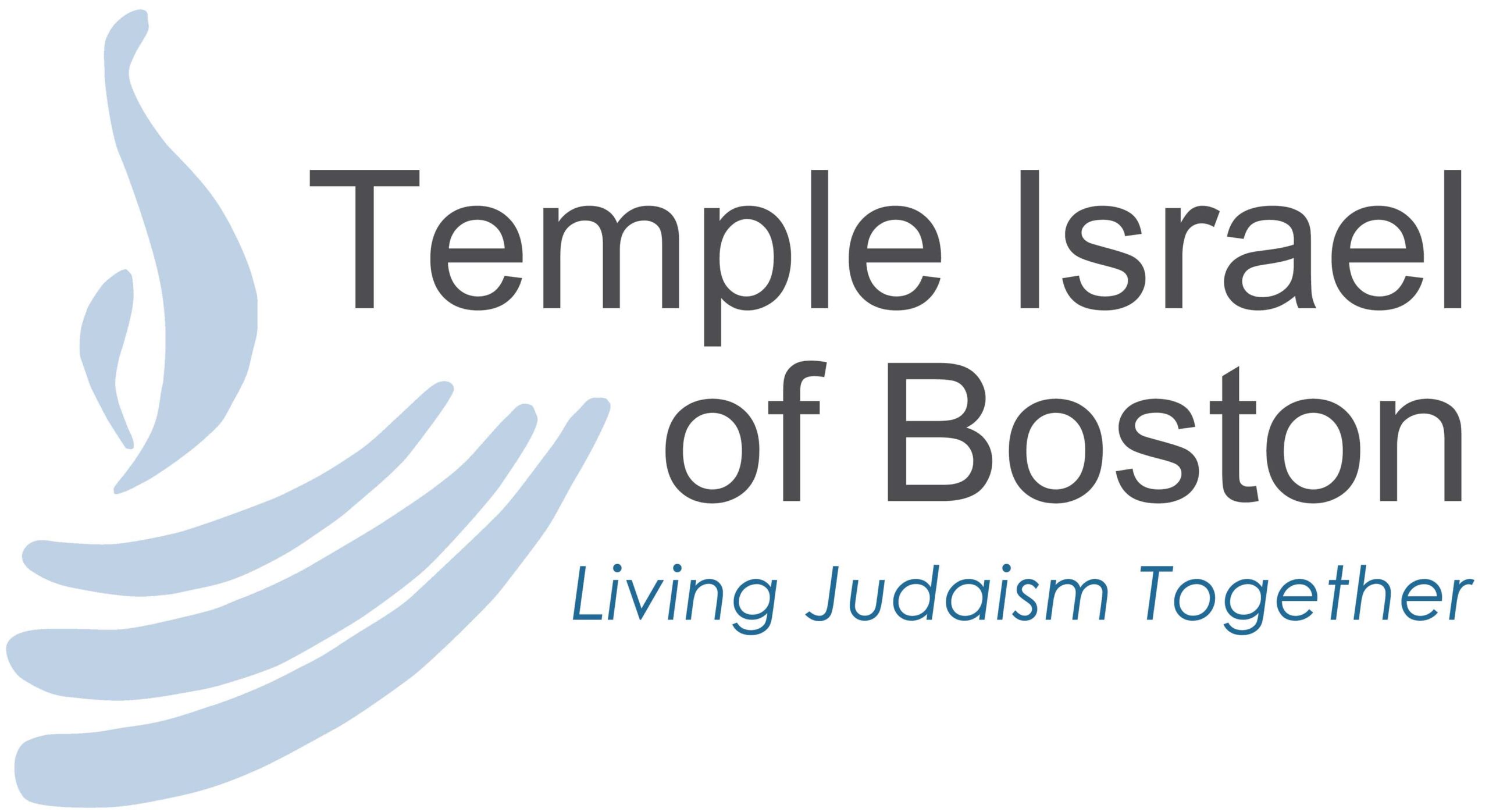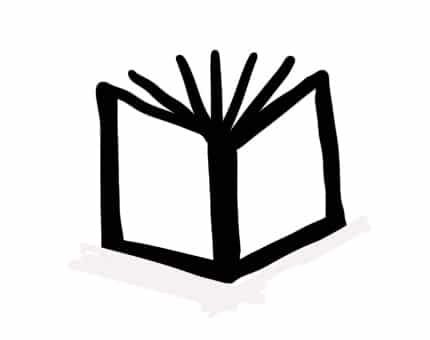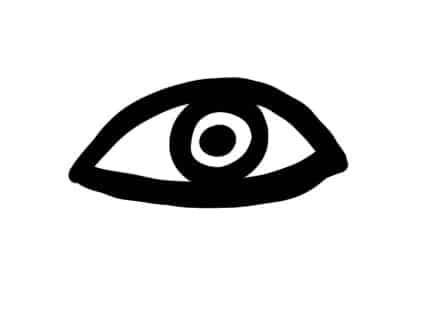
An Antiracist Journey
Jewish tradition sets the ten days between Rosh Hashanah and Yom Kippur as a time for t’shuvah, a shared journey of reflection in which we examine our lives as individuals and as a community in order to turn from ways that are hurtful and destructive and more fully embrace the compassionate justice that is the heart of our faith. During these High Holy Days, we recognize that Temple Israel, like our society, has missed the mark. For ten days we contemplate what parts of ourselves we wish to cast away, and who we want to be moving forward into a new year. As a community rooted in the concept of tikkun olam, we strive to find ways in which we can help repair some of the brokenness of the world.
In that spirit, this year we continue to reflect on the sin of racism, one of the most powerful social malignancies threatening our world today. We are alarmed by the resurgence of militant white supremacism and antisemitism. We are disheartened by the ongoing discrimination against people of color that is endemic in our social, economic, and political structures. Yet we are hopeful that this is an opportune time for real change.
To that end, we are collaborating with the Bethel AME Church community, building on our longstanding relationship, to more fully explore what it means to be antiracist. The Jewish and Christian communities share a legacy of partnership in the struggle for racial justice that is more than a century old. This is #10Days10Ways’ fifth year at Temple Israel, and we invite you to engage with us on this mutually transformative journey.
Join our Facebook group to receive daily stories and to interact with others on this journey. Questions? Email Temple Israel’s Assistant Director of Social Justice Engagement Tali Puterman.
2021 Schedule
Day 1: 9/6/21
Story: Louise Freedman (Temple Israel)
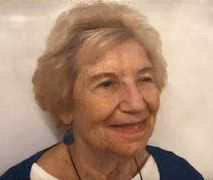 When it comes to racial equity, diversity, and inclusion work, I often wonder, “Who is actually listening, or are we preaching to people of like minds?” I grew up White in the 40s in Newton, during a time when Jewish people were taught to keep a low profile. I remember my father becoming very upset when reading the newspaper and someone with a Jewish sounding name was reported with negative press. At that time, Jewish people couldn’t stay in many hotels, belong to some clubs, get accepted into many professions or schools of higher learning. When I went to college, many of my new friends had never met a Jewish person. I often think: if I knew then what I know now about racism and inequity against People of Color, would I have asked more questions or done anything differently?
When it comes to racial equity, diversity, and inclusion work, I often wonder, “Who is actually listening, or are we preaching to people of like minds?” I grew up White in the 40s in Newton, during a time when Jewish people were taught to keep a low profile. I remember my father becoming very upset when reading the newspaper and someone with a Jewish sounding name was reported with negative press. At that time, Jewish people couldn’t stay in many hotels, belong to some clubs, get accepted into many professions or schools of higher learning. When I went to college, many of my new friends had never met a Jewish person. I often think: if I knew then what I know now about racism and inequity against People of Color, would I have asked more questions or done anything differently?
My family joined Temple Israel in 1965 when my oldest daughter was six, the same year Martin Luther King Jr. spoke at the Temple. Unfortunately, I didn’t attend and have always regretted missing that milestone. A few years later, I started to volunteer at a school in Dorchester where the majority of students were Black. My father was appalled. “Why do you want to go into that neighborhood?!” The experience was eye opening for me because I remember thinking the neighborhood was just fine! But what disturbed me was how racially segregated the school had become, considering the neighborhood once had a thriving Eastern European Jewish community. My grandparents lived in a predominantly Jewish area close to their Orthodox shul where my family spent a lot of time, especially during Jewish holidays. After they passed away, Redlining and White Flight occurred, and I never went back “to those neighborhoods” until I found myself back there on my way to a Greater Boston Interfaith Organization (GBIO) meeting a few years ago. The street looked the same to me, even after so many years.
Over time, I became more involved in Temple Israel’s social justice activities. Maybe the awareness of the brutal police beating of Rodney King in L.A. and the destructive riots that followed in 1991 opened our eyes to the iniquities suffered by our Black citizens. In 1992, the Temple Committee that I chaired and Rabbi Mehlman decided to change our usual January Friday Interfaith Lecture on Hunger and Homelessness to a weekend partnership with the Black Columbus Avenue AME Zion Church in remembrance of Martin Luther King. This Church was housed in the original Adath Israel (now Temple Israel) built in 1865. I volunteered to arrange a potluck dinner with the church, held after our Friday Night community speaker, which eventually necessitated a caterer due to increased attendance. On Sunday, we worshiped together and lunched at their church. In the late 1990s we changed partners to The Bethel AME Church in Jamaica Plain with a similar format where we still continue to honor Dr. King. But the question remained: are we just gathering people of like minds?
In my professional life, my social circles were widening and so was my desire to learn and work against racism by attending and leading workshops. The City of Newton sent the first group of teachers trained in the Facing History and Ourselves study guide which I team-taught for many years. When Massachusetts Standardizing Testing was instituted, there was no longer time for extended teaching of Facing History. At my middle school, I instituted a “World of Difference” program and received a Teacher of the Year Award in the late 1990s for my work on diversity education. At the same time, the Temple instituted new initiatives in one-to-one relational building with the Greater Boston Interfaith Organization, which led to real change such as the Massachusetts Affordable Care Act. The more people I met, the more I learned, and the more I wanted to act.
A few years ago I went on a trip to The South on a paddleboat down the Mississippi River with a friend. It was during the 2016 Presidential election week and our seats at mealtimes were pre-assigned. We sat with a born-again Christian couple who would read from their bibles during dinner as well as a mother and daughter from Florida who hated immigrants coming into the country. Needless to say, we were unable to have meaningful discussions with our fellow travelers. One day, I ventured off on my own and walked into the deserted town of Greenville, Mississippi after reading about an active Jewish community in the mid-1800s. There, I found a Temple almost identical to Temple Ohabei Shalom in Brookline. Although the Temple was closed, I was able to get inside. The interior had beautiful stained glass windows in its spacious sanctuary as well as a photo gallery detailing the rich history of the Temple and its members. While there, I met the Rabbi who drove in from a far distance every few weeks to teach two children who also traveled over 75 miles to get there. It was a remarkable experience to meet these Southern Jews and see the effort they put in to practice their Judaism together. Later on the trip, we visited a plantation in Natchez, Mississippi, where across the street was another Temple, another replica of Ohabei Shalom. Completely deserted, all that remained of the once-vibrant community was a historic plaque out front. The community was just a memory. Inside the plantation, I felt transported into “Gone with the Wind,” a favorite movie from my younger days. But now that I was more aware of the history of slavery, I asked, “how many slaves lived here?” 551, I was told. Everything changed after that moment. I couldn’t enjoy the rest of that tour, and the proximity to the Temple was chilling.
At Temple Israel we are engaged in a culture shift of Racial Equity, Diversity, and Inclusion. I’m now 86 and I wonder how I can help at my age. In answer to “who is listening?” I am listening! I participated in last year’s 10 Days 10 Ways Campaign and carefully read TI’s diversity, equity, inclusion, and antiracism statement — I was shocked that even though I have dedicated most of my adult life to learning and acting for racial justice, I genuinely had no idea of some of the negative experiences of some of the members of color in our synagogue! I thought TI was so welcoming, so progressive. For example, it was a place that would marry my gay friends when many other rabbis would not. Even I, who has led sessions on racial equity and has continued to teach and read about our country’s deep legacy of racism well into retirement, was still unaware that many felt unwelcome. I feel it is my moral obligation to work for Tikkun Olam, repairing the world. Doing so under our country’s present toxic environment is daunting, but I remain committed to continue to work for Dr. King’s vision.
Reflect
Even though Louise has spent much of her life listening, learning, teaching, and acting for social justice, she recognizes that there is still much to learn. Can you relate to this sentiment? If yes, can you think of a specific moment in recent years wherein your outlook was changed in regards to race and racism?
Reflect on why you are participating in this year’s #10Days10Ways Campaign. What do you hope to gain by participating this year?
Act
Invite a friend or family member, or two to participate in this year’s #10Days10Ways Campaign with you. You can consider setting up an accountability system in which you check in with each other each day.
Day 2: 9/7/21
Story: Janet Humdy Morrison (Bethel AME) and Michele Fishel (Temple Israel) — “Becoming One”: A Conversation
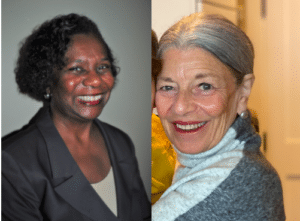
Janet: A few decades ago, along with with Rabbi Zecher and Reverends Gloria White Hammond and Liz Walker, a group of women from Bethel AME and Temple Israel decided to meet as a bible study group that we called “The Red Tent,” after the book of that name by Anita Diamant. We’d meet in our homes over a potluck meal, taking turns hosting. This was a transformative experience for me, and continues to be today. One piece that resonated strongly and has stuck with me over time, was the opportunity to gain insight into Jewish culture by building relationships with Jewish women. Growing up, I knew some Jewish people but they were mostly shopkeepers — people who sold things to us. Later, I developed friendships. Through “The Red Tent,” my own faith was deepened as we gathered over the same texts from the bible and the Torah and looked at them with such different eyes.
Michele: What is amazing, is this all started from a place of friendship. Carol Michael and Liz Walker would walk their dogs together, and from that friendship, the idea of this group took shape. Rabbi Zecher and Pastor Gloria then took it on. On Sunday of Martin Luther King Jr. Weekend this past year, Janet and I ended up in the same breakout room following Bethel’s services. It took us a minute to remember each other, and before long we were reminiscing about all the people from the days of The Red Tent. I remember feeling so excited and nervous at the incredible opportunity for our two communities to learn together in a safe and structured environment. What was fascinating is that what brought us together under shared faith — the Bible — led us to really notice our differences. What the text meant to us and how we accessed it felt so different across our communities.
Janet: I remember being so fascinated by the concept of a Midrash. In the Jewish community you can take a bible story and so many stories blossom from it. This is different from our Christian culture, and when we do engage similarly it’s much less formal. A moment that stands out to me was when we talked about Mary and how the Holy Spirit descended upon her. For us, this story is sacred. But together we examined it so closely, asking so many questions. I recall someone asking, “Did Mary consent to this?” She almost made it sound like Mary might have been molested! This was jarring to some of us and brought up conversations about how you react to a religion and culture which is different from your own. Another conversation surfaced around pronouns and the gendering of God. Those of us from Bethel would say “He” and some from Temple Israel would say, “I thought we aren’t supposed to say ‘He’?” Rabbi Zecher said, “Jesus was a he!” (Today some of us when referring to God, may not assign a gender.)
Michele: I was in awe of your access to God. It was like God was right there, at all times. In Judaism, it feels like we have a rubric to access God and a structure for prayer that brings us closer. Studying together with the Bethel community, I felt there was such a closeness to God for you and honestly, I was envious. Pastor Gloria started a practice of spontaneous prayer, which was so foreign to us. Rabbi Zecher took this on, and then each one of us took turns leading with spontaneous prayer. During this practice, we captured so much more than our words ever could. It felt like a beautiful moment of us all becoming one, and all individual differences fell away during those prayers.
Janet: I developed such bonds with people from this experience. Even though we don’t see each other often, I feel close to Rabbi Zecher. I remember us all going to Carol Michael’s shiva after her husband passed away and the day Pastor Gloria’s granddaughter was born. I feel like an associate member of Temple Israel. Whenever I hear of something happening there, I think about how I must go. I guess that’s what happens when you spend so much time in people’s homes, our lives become intertwined and we connect on a deeper level. Some challenges would arise. Not everyone had the same financial means which can be obvious when visiting people’s homes. During check-ins, some people had enjoyed world travel opportunities while others didn’t have the same experiences and felt left out.
Michele: The personal was woven into our structure, organically. If we were meeting now, I wonder how it might look different. What would I do differently? I remember when our group ended, and I was so sad that it was ending. I didn’t understand why, and I also didn’t understand why we didn’t continue our friendships. I didn’t call or reach out to anyone, and that’s a big regret that I have. There’s another moment that stands out as a regret. One of the Bethel members said she had brought her son to the Brookline police station so that the police would meet him. I was horrified! This was a stark difference from my experience as a white woman and something I did not know of my social groups doing. But I didn’t do anything about it. I wonder if we were meeting now and I heard that story again, would I do something about it? Advocate against police brutality and other forms of systemic racism?
Janet: We had some real conversations about antisemitism, which I found very enlightening. I knew antisemitism existed, but I remember one story so specifically when a woman from Temple Israel said she had been called a Christ Killer. I could not understand how someone could get the story so wrong. Jesus was a Jew! I remember being shocked and sad. It reminded me of when I was in third grade and my teacher told us that Christopher Columbus discovered America. How do you discover a place where people live? This story hit me the same way. I remember women would share their experiences of antisemitism but I got it at a deeper level. Not only did I learn a whole new perspective about how Jewish people are treated in society, but this experience shaped the way I saw education. Growing up, we were not taught to question. We didn’t question our parents, our teachers, and definitely not the bible. The questions that came up in our bible study were much deeper than I ever would have asked.
Michele: I wish we had the opportunity to process some of these transformative moments out loud. We didn’t always openly discuss our differences in experiences. There were some topics we avoided exploring, even though they were in the room. I feel like we treaded lightly, and if we were doing this now, I would hope we’d go deeper. Do you feel that way, Janet?
Janet: Yes. If we were doing this today, after the rise of the Black Lives Matter movement, the murder of George Floyd, synagogue shootings, I think we would have a different level to the conversion. My memory is mostly about the aspects we learned about our faiths, less so about racism. It was underlying, but it didn’t come to the surface in the way it might now.
Michele: I really appreciated the structured conversations of our meetings back then, and if it were today I’d hope to maintain that structure, but I also hope we’d be able to dive a little deeper. We could allow our curiosity to be even greater around one another.
Reflect
Janet and Michele each speak about their transformative experiences over the course of “The Red Tent” gatherings. Do you have a relationship or relationships in your life that have taught you to see the world differently?
Michele speaks about treading lightly on some topics during her time in “The Red Tent” study groups. Do you ever feel that you have to tread lightly when in groups of people who share a different identity to you (whether race, gender, sexual orientation, disability other)? If yes, why do you feel this way? If not, why not?
Act
Engage in a courageous conversation with someone who shares a different identity or belief to you (perhaps someone with a differing political ideology, or a different religious or racial identity). What similarities do you notice in your values and viewpoints? What differences do you notice in your values and viewpoints?
Day 3: 9/8/21
Story: Isa Gonzalez (Temple Israel)
Reflect
Who in the story do you identify with? How does that impact the way you hear and react to this story?
Have you ever felt like an outsider in a group where you should have felt like an insider?
Or have you ever been an insider in a group? If yes, what made you feel this way?
Have you ever felt like you needed to pick one aspect of your identity over another? What could have been done differently?
Act
This story highlights how important Racial Equity, Diversity, and Inclusion (REDI) work is (especially in predominantly white communities), and also how challenging it can be to do this work well. Engage in existing REDI initiatives in your communities, or work to start them in your communities where they may not already exist. If you identify as white, remember to do so in close conversation and relationship with members of color. If you are not sure where to start, see this guide from the Union of Reform Judaism.
Day 4: 9/9/21
Story: Carl Racine (Bethel AME) — “My Summer of ‘69”
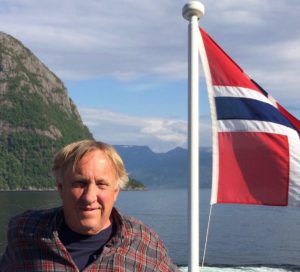 When Martin Luther King Jr. was murdered in April 1968, it meant nothing to me. I am not sure that I even knew who he was at the time. I was 15 years old, a junior in high school, isolated from the civil rights movement, protests and sit-ins, marches and rallies. The so-called “race riots” of the era were hardly a blip on my personal radar screen. I had been dimly aware of the uprising in Watts in 1965, but it was as far away from me in the LA suburb where I lived as Atlanta or Montgomery or Birmingham. Basically I was living in an all-white world. In my public high school of 2,200 students, there was not a single African American. It was not until much later that I realized how carefully my parents had kept us segregated by their choices of where we lived and went to school.
When Martin Luther King Jr. was murdered in April 1968, it meant nothing to me. I am not sure that I even knew who he was at the time. I was 15 years old, a junior in high school, isolated from the civil rights movement, protests and sit-ins, marches and rallies. The so-called “race riots” of the era were hardly a blip on my personal radar screen. I had been dimly aware of the uprising in Watts in 1965, but it was as far away from me in the LA suburb where I lived as Atlanta or Montgomery or Birmingham. Basically I was living in an all-white world. In my public high school of 2,200 students, there was not a single African American. It was not until much later that I realized how carefully my parents had kept us segregated by their choices of where we lived and went to school.
I do not remember issues of race ever being discussed in our home, at least not in my presence, with one very notable exception. Sometime in the fall of 1964, when I would have been 12 years old, we had the pastor of our church over for dinner one day. He was a good family friend, and someone I really looked up to. He shocked us all by announcing that he was going to vote for Lyndon Johnson in the upcoming presidential election because he was concerned about Goldwater’s stand on civil rights. I don’t think I had ever known anyone before that who admitted that they were going to vote for a Democrat, let alone someone who was concerned about civil rights for “colored people.”
So when King was assassinated, I didn’t even notice. It was just another one of those news stories about people far away that had no relevance for the world I lived in. But that was about to all change for me because of a very odd quirk of circumstance. Sometime the following year, my brother came home with a book, a new book that had just come out. That was incredibly unusual. While I was a voracious reader, my brother took pride in the fact that he never, ever, read a book. To this day, I still have no explanation for how it was that he ended up with a copy of Soul on Ice by Eldridge Cleaver. It certainly wasn’t assigned to him in school, not in our school system. I don’t know where he got it, but I am sure that he brought it home simply because he knew it would be provocative. The book lay around until I was done with school for the year, when I picked it up and decided to read it.
I had no idea what I was getting into. My little world was forever changed. This was my first exposure to anything of substance about the African-American experience in America. It opened a window for me on the civil rights movement, black power, the prison system, and the Nation of Islam. It was all so new to me that I didn’t understand the specifics that Cleaver was talking about. What I took away from the book was the anger, the frustration, the resentment against white people, the struggle to achieve personhood for a black man. It was a harsh rebuke to white America’s image, to my image, of America as a land of the free with liberty and justice and opportunity for all.
Soul on Ice also provided me with a list of other African-American writers to read. Because of Cleaver’s book, I ended up spending the whole summer of 1969, the summer before I went away to college, reading 20th century African-American literature. My reading was not particularly systematic. I just read what I could get my hands on by a number of writers that Cleaver mentions. I read James Baldwin’s essays: Notes of a Native Son, Nobody Knows My Name, and The Fire Next Time, and his novel Go Tell It on the Mountain. I read Richard Wright’s Black Boy and Native Son. I read Ralph Ellison’s Invisible Man and I read The Autobiography of Malcolm X.
I was confronted here for the first time with what black people had suffered in the United States of America in the 20th century. Not what they had suffered under slavery, which I thought to be in a distant past now long gone, but what they had suffered in my lifetime: the Jim Crow laws in the South, ghetto life in the North, the demeaning treatment given them, discrimination and hatred, violence and brutality everywhere they went simply because of the color of their skin.
This point was made especially vivid to me by the one book I read that summer that was written by a white man. It had the provocative title Black Like Me, and was the true story of John Howard Griffin, who in the fall of 1959 had managed to undergo medical treatments to darken his skin, so that for two months he could travel around the Deep South and experience firsthand how a black man was treated. He narrates his constant struggle just to find the basic necessities of human life: a place to sit when he is tired, a bathroom, something to eat and drink. He lives in constant fear of doing or saying something “wrong,” something that might give even a slight offense to a white person. It was a harrowing experience, and one that exposed the absolutely arbitrary nature of the racist system. When Griffin stops taking his pills and washes off the skin dye, he is once again treated with respect and dignity, though when the book is published his life is threatened because he dared expose the open secret of racial discrimination.
Even today, over 50 years later, my reading experience that summer burns intensely in my memory. Yet for the most part, the readings all kind of blurred together because for me they were all telling the same story. This was too new for me to understand things like the differences that arose between Malcolm X and Elijah Muhammad. I couldn’t appreciate the specifics of Eldridge Cleaver’s critique of James Baldwin’s approach to the “Negro problem” in America. How could I understand them? What I did understand and appreciate for the first time was the painful reality that there was a Negro problem in America, and that it was not just a Negro problem, it was a problem for all of us.
Sometime in the middle of all this, I was in a bookstore and saw a small paperback by another name I recognized from my reading: Martin Luther King, Jr. The book is called Strength to Love, and it was published in 1963 for 50 cents. I still have it. It is his first collection of sermons, and it had a profound influence on me. Looking at the book now, especially noting my original underlining, I am struck by how much of it I absorbed, how much of it has become central to my thinking about faith and the world. Dr. King’s sermons grew out of his experience of the same painful reality of racism in America that I had been reading about in the other authors. But oh, what a difference in his response. The book’s title says it all. Dr. King challenges his audience to stand up to the evils and injustice in our society, but to do so in the power of love. He urges resistance to racism and oppression, but using the strength of non-violence. He takes the central teaching of Jesus, that we must love even our enemies, and says, “This is not for some idealistic, utopian religious society somewhere far off in a heavenly kingdom. There is nothing weak or mild-mannered or milk-toast about Jesus. Love your enemies is practical advice for living in the real world, the world of lynchings and firebombs and police bullwhips. Hate only multiplies hate, and ultimately is self-destructive as well. An active love of enemies is the only road to a lasting peace.”
What I found in reading Martin Luther King was a Christianity that mattered, a Christianity that was not limited simply to a private individual religious belief and personal morality. His Christianity had public, political, and social implications. I was a teenager trying to figure out what it meant to be a Christian, and I had been greatly troubled by the anti-Christian attitudes of the writers I had been reading that summer. James Baldwin, for example, expressed his deep bitterness about the failure of Christianity to do anything other than oppress people of color. In welcome contrast, Martin Luther King offered a profoundly Christian vision of action and liberation, of overcoming hatred with love, evil with good. He offered hope in this world, in the middle of all the hate. His words spoke to me with prophetic power and conviction. They challenged me to look at all that I had heard and been taught about Christianity, about loving your neighbor and even your enemy and overcoming evil with good, and ask: do you really believe this, do you really want to believe this and live it out? Even if it offends people, even if it alienates your family, even if you have to go to jail for refusing to serve in the Vietnam War?
When I reread these sermons today almost 60 years after they were written, I am overwhelmed by the vitality of Dr. King’s message and Christian commitment, by the depth of his thought, by the strength of his love, and by the relevance of his message for us still. It’s not just theory, not just ideas, but ideas that can be put to work, ideas that he did put to work. My whole world was turned upside down and subverted that summer. My reading pointed me down the road in some brand new directions, especially Dr. King’s emphasis on economic injustice, and I have been trying to come to terms with it ever since. Strength to Love and Soul on Ice are the only two books I read that summer that I actually own and I still have them. I keep them because they were the foundation for a kind of creative tension in my mind between hope and despair. Everyone should have a summer like that.
Reflect
Reflect on the environment in which you grew up. How was it the same, and how was it different from Carl’s?
Carl writes about reading several pieces of literature that caused an awakening of his awareness of racism in America. What, if anything, was a turning point that opened your eyes to racism or other forms of discrimination in the United States? What steps have you taken to continue to educate yourself about race and racism or other forms of discrimination in the United States?
Act
Commit to reading one of the books Carl mentioned in his story, or another book about race and racism of your choice. Consider purchasing the book from a local black-owned business, like Frugal Bookstore in the Boston-area.
Day 5: 9/10/21
Story: Carole Copeland Thomas (Bethel AME)
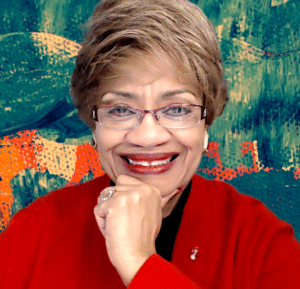 Black History Is Facing Fear Everyday
Black History Is Facing Fear Everyday
TEDx Speaker
Guidebook Author of Facing Fear
From the shores of Africa, the resilience of African Americans has anchored and fortified a race of people like no other. The mere existence of those who survived the cramped and inhumane slave ships meant that only the strongest and most fit Africans lived to tell their stories. And it is that spirit of defiance and strength that black culture found its voice throughout the Americas.
As a sixth-generation African American whose American roots go back to the 1700s, I know how talented and resourceful black people have been in this country, often with little or no resources. Segregation and institutionalized racism impacted every aspect of our lives, yet black people have shown patriotism, dignity, and fearlessness throughout our historical past. Patriotism and fearlessness prevailed when runaway slave Crispus Attucks was shot and killed in 1770, becoming the first American to die in the Revolutionary struggle for freedom.
In my life, I have needed to show resilience, determination, and faith. There was once a time I thought I would get married and stay married forever. That was the aspiration of my parents and the reality for my maternal grandparents. However, when I divorced and was left with raising my three children, sometimes fear gripped me. Another kind of fear hit me right between the eyes when my seventeen-year-old son was killed in a single-occupant car accident just six days after graduating from high school. If you are a parent, this is no fear you ever want to experience. My fear gripped me until I learned to manage it.
It wasn’t just in my personal life that I’ve experienced fear, but also my career path as an entrepreneur, working in the field of diversity, equity, inclusion, multiculturalism, and antiracism. So many people do not want to approach these topics – people are so afraid. And if we are not careful, fear can be weaponized. “Things are fine the way they are!” and “I don’t want to rock the boat!” are fear-laden comments I often hear in my line of work. The status quo is comfortable, but when we move out of the status quo, that’s when fear sets in.
When it comes to overcoming my fears, I look to those who came before me. One of the most spectacular and historical moments of fearlessness was the daring escape of Ellen and William Craft. In 1848 Ellen Craft, a biracial light-skinned slave dressed up as a white man, with her husband, William, posing as her servant. The two eluded the police and slave bounty hunters by escaping from Georgia through Philadelphia through Boston, ultimately emigrating to England. They Faced Fear Countless Times And Pushed Past Its Grip.
I reflect on my long-standing friendship with the late Juanita Abernathy, the wife of Rev. Dr. Ralph David Abernathy, the closest associate to Dr. Martin Luther King, Jr. Juanita played a pivotal role in the Montgomery Bus Boycott in the 1950s. Her family put their lives on the line throughout the Civil Rights era, and they often pushed fear aside. Ellen and William Craft, Juanita Abernathy, Rev. Ralph David Abernathy, and so many others have left a collective legacy so that we can minimize our fear and move forward with the courage to change our society for good. I have learned to acknowledge my fears so that I can move forward.
So when you study the history of Crispus Attucks, Harriet Tubman, Frederick Douglass, The Crafts, Fannie Lou Hammer, Madam CJ Walker, Viola Liuzzo, Cesar Chavez, and thousands of other black, brown, and white patriots, you’re looking at decades of fearless, bold, and outrageously courageous men and women who stood up to racial injustices, faced their fears and marched on anyway!
When you find yourself facing fear on a personal or professional level, just stop and think about the countless number of African Americans who faced their fears, pushed past them, prayed unceasingly, and embraced the uncertainties and miracles of day-to-day life and beyond.
Reflect
From where or from whom do you draw resilience, determination, and faith?
Do you relate to the fear Carole speaks about? What has helped you overcome fear? In what ways are you still struggling?
Act
Attend Temple Israel services this evening at 6 p.m., onsite or online. Vaccinated people are invited to join us in person at 477 Longwood Avenue (outdoors weather permitting), or you may choose to join online.
Day 6: 9/11/21
Story: Robin Weinberger (Temple Israel)
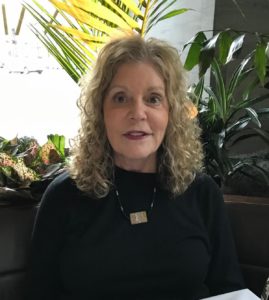 Last year, I was part of a group that discussed Ibram X. Kendi’s book, “How to be an Antiracist.” I decided to participate for two reasons: I wanted to try to understand not what racism is — everyone can give you their own definition — but, how it feels to be on the receiving end; and, I thought that by getting to know people of color from Temple Israel, where we have our Judaism in common, that it could be the beginning of my understanding and of modifying my behavior. What the conversations made me think about is that there are pivotal moments in your life when something happens or something is said that leaves an indelible impression on your thinking and on your future behavior.
Last year, I was part of a group that discussed Ibram X. Kendi’s book, “How to be an Antiracist.” I decided to participate for two reasons: I wanted to try to understand not what racism is — everyone can give you their own definition — but, how it feels to be on the receiving end; and, I thought that by getting to know people of color from Temple Israel, where we have our Judaism in common, that it could be the beginning of my understanding and of modifying my behavior. What the conversations made me think about is that there are pivotal moments in your life when something happens or something is said that leaves an indelible impression on your thinking and on your future behavior.
When I was a little girl, growing up in a very White world, once a week, we had a Black cleaning lady come to our house. She also worked for my grandmother. We were all very fond of her, but what I distinctly remember is that one day my grandmother said that her heart goes out to Black people because no matter what they do, they will still be Black and that people will not look at them the same way that they look at us. She then went on to say that although there is a lot of antisemitism, that Jews, if they choose, could assimilate. I will never forget that conversation and how unfair, but true, that her words were then and, unfortunately, still can be today. We need to be better.
Another meaningful moment centers around my best friend, whose daughter (White) got engaged to a Black man. This was about 20 years ago and still was kind of shocking and hard for everyone to accept. He could not have been nicer, was well educated, had a good job, his mother was a judge, etc., but everyone was concerned about how hard it would be for a bi-racial couple and for their children. The two grandmothers got together to discuss the situation. One was really upset and said that she could never accept this; the other one, who at the time was well into her 80s, said to the other one, “get over yourself! By the time their kids get older, the world will be different and it won’t matter. You don’t want to lose your granddaughter and you need to get to know your new grandson.” She did, although it was a struggle, and until her death, she loved her children and her 3 great grandchildren and was happy to have them in her life. One grandmother behaved better, and her influence certainly had a big reach to make the people around her better — on me too. I love those little boys.
It’s been a year since I was a part of that group. I’d like to think that I have a little more understanding of how racism feels, but perhaps more importantly, I have formed a relationship with my group’s leader, Bea Wilderman, a Jewish person of Color in our community. We now have an ongoing dialogue that I never would have had before, including emailing back and forth about a play that I recently saw with a racist theme, “The Niceties.” In my last note to Bea I wrote,
“Ever since we did that course together, it has made me see things through a different lens. Periodically, I catch myself thinking something I shouldn’t and think back to what we discussed. As I said, I find myself smiling at people I never would have and when they smile back, it warms my heart. Thanks for your influence.”
Change is a process, not something that happens with the “wave of a magic wand,” or just because you say you want to. You need a series of catalysts to help. If we can all keep our eyes and ears and, most importantly, our hearts open, there will be little things that string together to begin to work for each of us. I’m lucky — I had my grandmother, my best friend’s mom, and now have Bea too.
Reflect
In Ibram X. Kendi’s book, “How to Be an Antiracist” he begins with a story in which he calls himself (a black man) racist. This is because American society has normalized a certain set of assumptions about black people from which he is not immune. Becoming an antiracist is a process and not a state of being, and Robin similarly talks about change being a process. Where do you think you are in this process? Who or what have helped you in your journey toward being an antiracist?
Act
Attend Temple Israel Havdalah service at 8 p.m. Participate in this short Jewish ritual during which we will learn about the history of the AME Church from a member of the Bethel AME Community.
Day 7: 9/12/21
Story: Chris Palmer (Temple Israel)
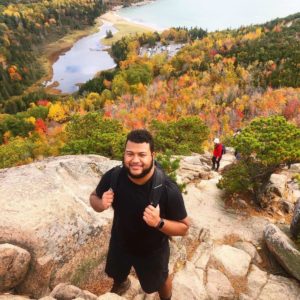 I recently came across a page in the Babylonian Talmud which recounts the story of Rav Yosef, son of Rabbi Joshua ben Levi, who had a near-death experience as a result of a grave illness. When Yosef returned to good health, his father asks him: “what did you see when you were about to die?” Yosef responds that he saw עוֹלָם הָפוּךְ, olam hafuch, an upside-down world (no, not the one from Stranger Things!) Yosef continues that the people who are downtrodden in this world are revered in the upside-down world, and the people of privilege in this world are insignificant in the inverted world. Yosef’s father responds: “you have not seen an upside-down world, you have seen עוֹלָם בָּרוּר, olam barur, a clear world (Pesachim 50a).
I recently came across a page in the Babylonian Talmud which recounts the story of Rav Yosef, son of Rabbi Joshua ben Levi, who had a near-death experience as a result of a grave illness. When Yosef returned to good health, his father asks him: “what did you see when you were about to die?” Yosef responds that he saw עוֹלָם הָפוּךְ, olam hafuch, an upside-down world (no, not the one from Stranger Things!) Yosef continues that the people who are downtrodden in this world are revered in the upside-down world, and the people of privilege in this world are insignificant in the inverted world. Yosef’s father responds: “you have not seen an upside-down world, you have seen עוֹלָם בָּרוּר, olam barur, a clear world (Pesachim 50a).
The Sages tell us that Yosef has gotten a taste olam habah, the world to come, in which the karmic scales equilibrate and people who have anguished in this life are rewarded in world to come. I can’t speak much about the upside-down world that Rav Yosef describes, but there is a lot I have to say about the world we live in now, which can frequently feel like it is upside-down for those of us who identify as Black, Indigenous, and People of Color (BIPOC). Conceivably, the “clear world” Yosef’s father describes could be a clear view of olam hazeh, what the world we currently live in is like.
For the past year, we’ve heard many stories from folks on what it’s like to be a BIPOC person at a majority White, Ashkenazi synagogue. One year ago, I, myself, wrote a story for 10Days10Ways in which I told of racism I had experienced at Temple Israel. When it comes describing how to navigate this world as a person of color (especially the American Jewish world) Yente perhaps said it best: it’s all topsy-turvy (no? yes!) Despite the topsy-turviness of this upside-down world, I also wrote of hope that I had for a better and more antiracist TI in the future. Here I am, one year later, writing to rekindle my message of hope and reflect on the progress Temple Israel has made on the journey towards antiracism.
Since last year, there have been two major developments at TI that have made the world feel a little more right-side-up: the REDI working group and the BIPOC caucus. This past winter, I had the privilege of being a part of TI’s temporary REDI (Racial Equity, Diversity, and Inclusion) working group, which was created to propose specific actions in order to carry out Temple Israel’s Commitment to Diversity, Equity, Inclusion, and Antiracism, a commitment to completely transform TI’s culture so that BIPOC and other marginalized folks not only feel welcome, but a complete and utter sense of belonging. It was such an honor to have participated in this group, and the fact that this group was even created in this first place is indicative to me that TI’s leadership is serious about succeeding in its antiracism efforts. I was able to share my voice and my ideas with a group of likeminded individuals who also had terrific suggestions. Our collective brainstorming and conversations led us to our final proposal which, although it will take time and hard work to fully achieve, has already started to be slowly implemented. After all of the great work that this group did, I can sincerely say that I believe Temple Israel is one of the few Reform synagogues that is leading the charge on creating a more antiracist space for its congregants and I am very proud to have been a part of it. I’ve also had the privilege to be the chair of our new BIPOC Caucus, a community-building and action group for Jews in the TI community who identify as BIPOC. While the group is still in its nascent stages, I do believe that, with time, this group has the potential to be something very special, and a critical component in making sure that everyone feels a strong sense of belonging in the broader TI sphere.
Make no mistake: there is still a tremendous amount of work to be done and we’ve got a long way to go. We are not there yet, but I do not want to lose sight of all the progress we have made, especially in the past year. I feel very fortunate that I’ve been to take part in this very important work at Temple Israel, and I look to forward to all the accomplishments we will achieve in 5782, making the world a little less upside-down one day at time.
Reflect
When looking toward the future with hope and imagining “a clear world,” what do you see? What do you hear? What do you feel? What can you do to help bring that vision to the world as it is?
Act
Attend Bethel AME Church at 9:30 a.m. Pre-registration is required. Read more and register here.
Day 8: 9/13/21
Story: Sekou Writes (Bethel AME)
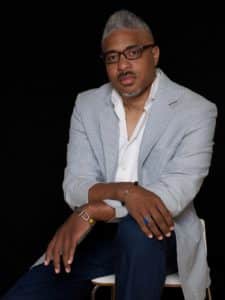 Sekou collects stories and aims to provide a safe, sympathetic space for Black people in America to share their stories about living in this country. Listen to one episode of Sekou’s podcast titled “Living While Black.”
Sekou collects stories and aims to provide a safe, sympathetic space for Black people in America to share their stories about living in this country. Listen to one episode of Sekou’s podcast titled “Living While Black.”
Reflect
Have you been judged because of an external characteristic, or judged someone else because of an external characteristic? Reflect on the situation and imagine a different outcome. What would you do differently, or hope someone else would do differently?
The storyteller talks about the culture of New York city at the time, and what that may have meant for himself as a black man. Reflect on the culture in your faith community, your school, your place of work. Does your community’s culture reflect one where everyone truly belongs, regardless of their identities? If yes, what makes it so? If not, what should change?
Act
While nobody lost their life in the above story, we have heard too many stories of innocent black lives that have been lost at the hands of police in the United States. Say this Kaddish (the Jewish prayer of mourning) for Black Lives.
Day 9: 9/14/21
Story: Jackie Gelb (Temple Israel) in Conversation with Flora Franklyn
Jackie and Flora met and built a relationship through Temple Israel’s Immigrant Justice work. Listen to their story to see the development of an unexpected friendship and hear directly about some of the challenges faced by people seeking asylum in this country.
10Days10Ways – Jackie & Flora from Temple Israel of Boston on Vimeo.
Reflect
After listening to this conversation, what are your personal takeaways? What lessons can you bring from this conversation into your everyday life?
When was the last time you formed a relationship with someone who would not have otherwise come into your life through your typical social circles. What circumstances led up to this relationship? What have you learned and gained from this relationship?
Jackie mentions “arbitrary barriers.” What arbitrary barriers have you noticed in your life? How do these barriers impact you?
Act
Volunteer to respond to the immediate needs of immigrants and their families with the Boston Immigrant Justice Accompaniment Network (BIJAN).
Donate to Temple Israel’s Refugee Resettlement Fund to allow us to continue to support refugees and asylum grantees in the Greater Boston area. You will need to choose “Refugee Resettlement” from the dropdown menu
Engage in other Tikkun Central, justice and compassion efforts at Temple Israel. Learn more.
Day 10: 9/15/21
Story: You
Thank you for participating in our #10Days10Ways Campaign. We all have a story to share that reflects our ongoing journey toward being an anti-racist. Please share your story. Take today to reflect and write your story. This can be an individual exercise, or you can email your story to Tali. We would love to hear from you!
Reflect
How did it feel writing your story? What did you learn about yourself?
What is one learning you will take with you into the new year following this #10Days10Ways experience?
Act
Join Temple Israel and Bethel AME church in ongoing actions for social justice and relationship building. To start, we are planning a volunteer day with Speak For the Trees, bringing Tree Equity to Boston — a collaborative environmental and racial justice effort. If you are interested in learning about future opportunities, please complete this short form.
